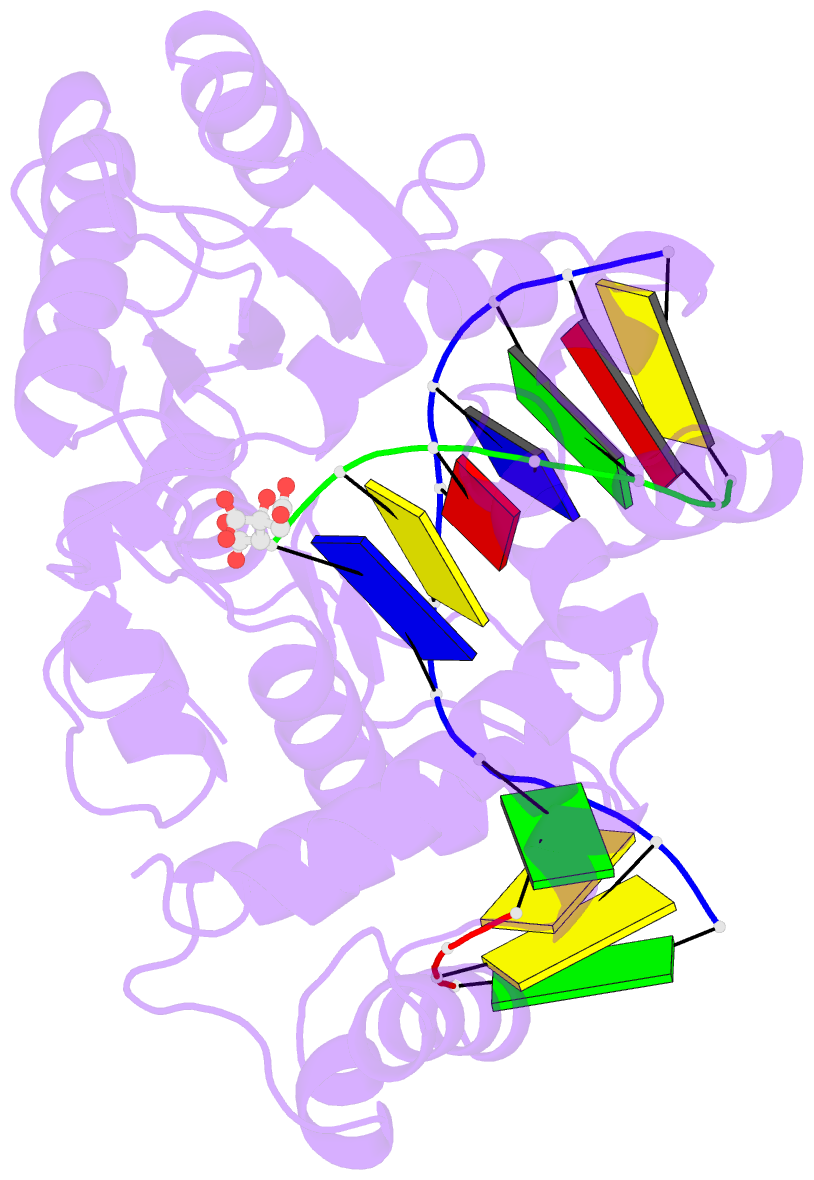Summary information and primary citation
- PDB-id
- 5iik; SNAP-derived features in text and JSON formats;
DNAproDB
- Class
- transferase-DNA
- Method
- X-ray (1.982 Å)
- Summary
- Crystal structure of the post-catalytic nick complex of DNA polymerase lambda with a templating 8-oxo-dg and incorporated dc
- Reference
- Burak MJ, Guja KE, Hambardjieva E, Derkunt B, Garcia-Diaz M (2016): "A fidelity mechanism in DNA polymerase lambda promotes error-free bypass of 8-oxo-dG." Embo J., 35, 2045-2059. doi: 10.15252/embj.201694332.
- Abstract
- 8-oxo-7,8-dihydroxy-2'-deoxyguanosine (8-oxo-dG) has high mutagenic potential as it is prone to mispair with deoxyadenine (dA). In order to maintain genomic integrity, post-replicative 8-oxo-dG:dA mispairs are removed through DNA polymerase lambda (Pol λ)-dependent MUTYH-initiated base excision repair (BER). Here, we describe seven novel crystal structures and kinetic data that fully characterize 8-oxo-dG bypass by Pol λ. We demonstrate that Pol λ has a flexible active site that can tolerate 8-oxo-dG in either the anti- or syn-conformation. Importantly, we show that discrimination against the pro-mutagenic syn-conformation occurs at the extension step and identify the residue responsible for this selectivity. This residue acts as a kinetic switch, shunting repair toward long-patch BER upon correct dCMP incorporation, thus enhancing repair efficiency. Moreover, this switch also provides a potential mechanism to increase repair fidelity of MUTYH-initiated BER.





